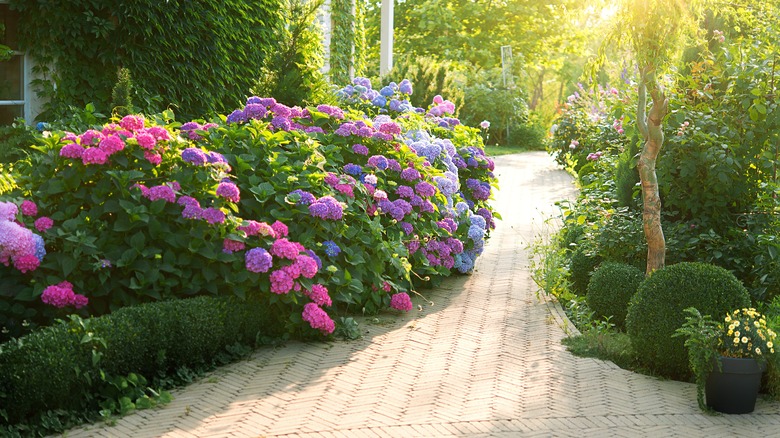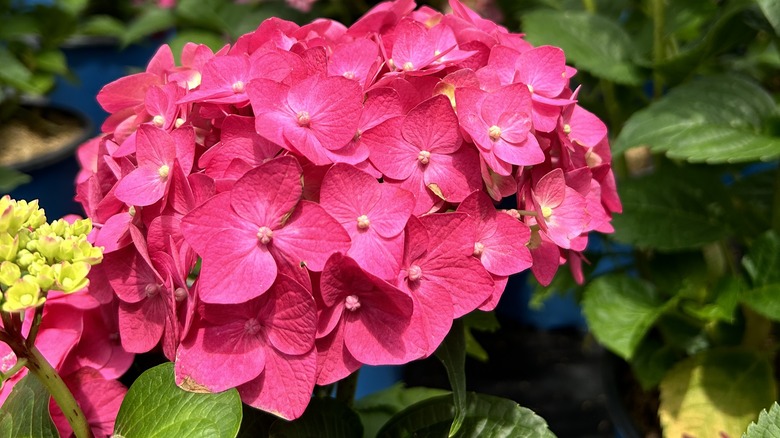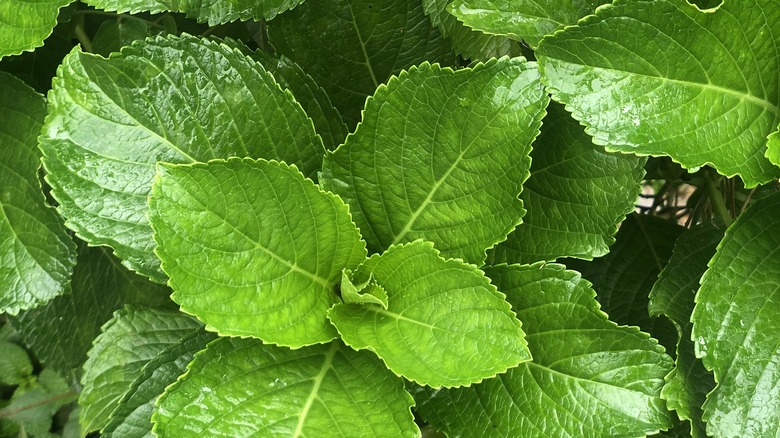Common Issues You Might Encounter With Summer Crush Hydrangea Care
'Summer Crush' is a stunning hybrid of the ever-popular bigleaf hydrangeas (Hydrangea macrophylla) and part of the 'Endless Summer' hydrangea collection. It has the most amazing large neon purple or raspberry red blooms to brighten up your garden and your inside decor when displayed in a vase. This gorgeous variety can be grown out in your garden but does equally well when grown on your patio in a lovely container. It's fairly compact, only reaching a height of around 36 inches. This is why 'Summer Crush' hydrangeas are the perfect choice for your small garden. But there are common issues that gardeners might face when growing these beauties, such as browning and wilting of leaves and flowers or a lack of blooms. These issues are normally caused by improper watering or pruning, or too much sun exposure.
On the bright side, hydrangeas such as the 'Endless Summer' collection also have a hidden benefit that makes them perfect for allergy-free gardens. They produce less pollen than other flowers and the pollen sticks to the flowers rather than disperse through the air. To help you grow healthier and more vibrant plants, here are some of the most common issues you might come across with your 'Summer Crush' hydrangeas and how to fix them.
Browning and wilting of leaves and flowers
'Summer Crush' hydrangeas can be grown in USDA zones 4 through 9, but, if your hydrangeas receive too much sun, you're going to end up with brown leaves, burnt leaf tips, and even brown spots on the flowers. Ideally, your hydrangeas should only be exposed to morning sun and be protected from the harsh midday or afternoon sun. If you live in the northern zones (4 through 5), your hydrangeas will be fine with up to six hours of morning sun daily. Gardeners in southern zones (8 through 9) should only expose their hydrangeas to a maximum of two hours of sunlight in the morning. So, if you notice the leaves and flowers turning brown, give your hydrangeas some protection from the sun.
You also need to ensure that you give your hydrangeas plenty of water. It's quite common for these hydrangeas to wilt during the warmer weather but they'll soon recover when watered adequately. To try and prevent this from happening, it's important to give the soil around your hydrangeas a really good soaking early in the morning. This allows the plants to soak up the moisture before the afternoon heat hits them. Always check the moisture level before watering them by sticking your finger in the soil. Only water if the soil feels dry to prevent fungal diseases. Providing your plants with enough water is one way to keep your 'Summer Crush' hydrangeas happy in intense summer heat.
Your hydrangeas are not blooming or not repeat blooming
'Summer Crush' hydrangeas were bred to be repeat-blooming. This means that they'll produce blooms in early summer on the old wood, and a second flush of blooms later in summer on the new wood. If your hydrangeas are not producing flowers in early summer, it may mean the old wood with the dormant flower buds has been damaged by frost during a cold winter, but it's not only frost that can prevent your 'Summer Crush' hydrangeas from blooming. It's important to prune your hydrangeas immediately after blooming because this will encourage the plant to grow new wood. As these hydrangeas were bred to bloom on both old and new wood, you'll end up with a further flush of flowers on the new wood that will grow after pruning. Deadheading the spent blooms from this second flush will also encourage the plants to grow even more flowers.
The other thing you need to be aware of is that summer heat and dry conditions will cause your hydrangeas to go into hot weather hibernation. This will essentially stop them from flowering. So, it's really important that you give these plants enough water right through the growing season. It's also important to select the right fertilizer before applying this to your hydrangeas in spring. Avoid fertilizer that's too high in nitrogen because this will encourage growth but not many blooms. Instead, choose a more balanced fertilizer with good amounts of phosphorus and potassium.


